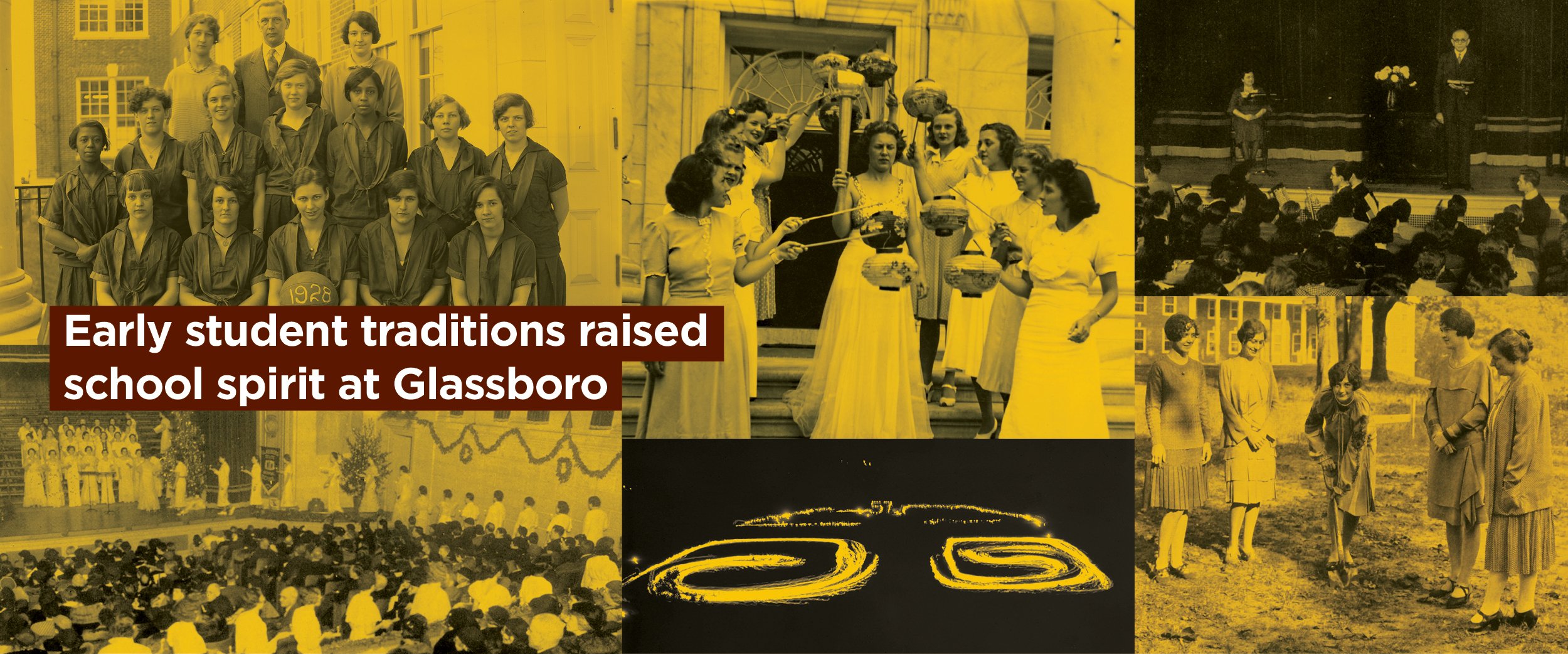
From the beginning, a lively population of students at Glassboro Normal School ensured the campus was buzzing with activity. Early traditions—big and small—characterized the first 50 years of student life on campus.
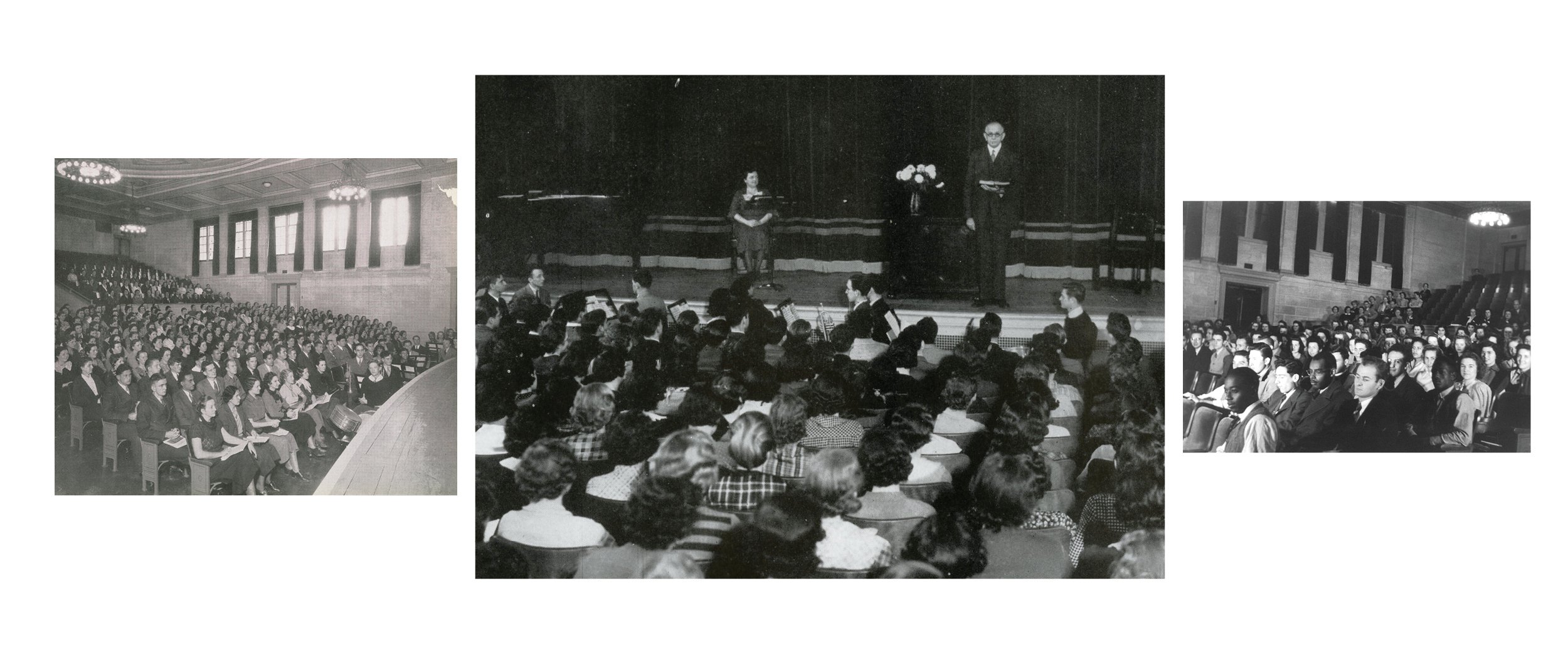
One of the earliest traditions was the chapel period, a brief but prestigious daily assembly, instituted by the school’s first leader, Dr. Jerohn J. Savitz.
As Glassboro State College administrator and historian Dr. Robert Bole wrote in “More Than Cold Stone,” the chapel period “took on the pomp and circumstance that attend a king’s coronation.”
Well-rehearsed singing accompanied the march to the auditorium, where programming ranged from outside speakers commenting on current events to skits, pep rallies and student presentations.
The chapel period remained a daily tradition for the first 15 years of the institution’s existence, ending after Dr. Edgar F. Bunce took office as president of the school in 1937.
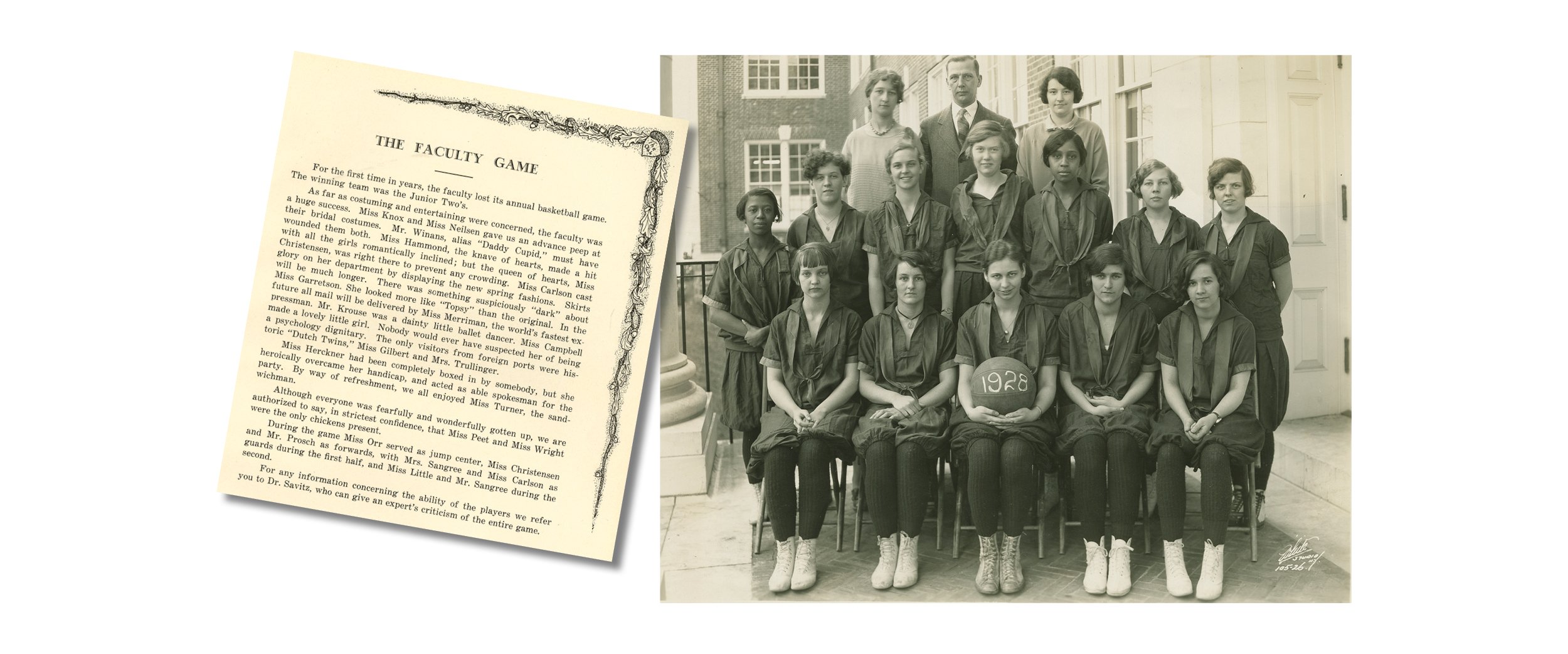
The history of athletics at Glassboro Normal School dates back to the institution’s very first year. In the early days, the athletic event that spurred the most enthusiasm was the annual faculty-student basketball game.
In a pattern Bole described as “ritualistic,” the captain of the champion junior class intramural basketball team would issue the challenge during the chapel period. When the “most dignified instructor” present accepted the challenge—as they always did—they “warned of the dire consequences” the students would face.
Faculty usually won the game, but what drew a crowd willing to pay a 25-cent admission charge was the pageantry. The usually dignified instructors “paraded and cavorted about the gymnasium attired in out-of-this-world costumes” that, in 1929, included characters straight out of Alice in Wonderland.
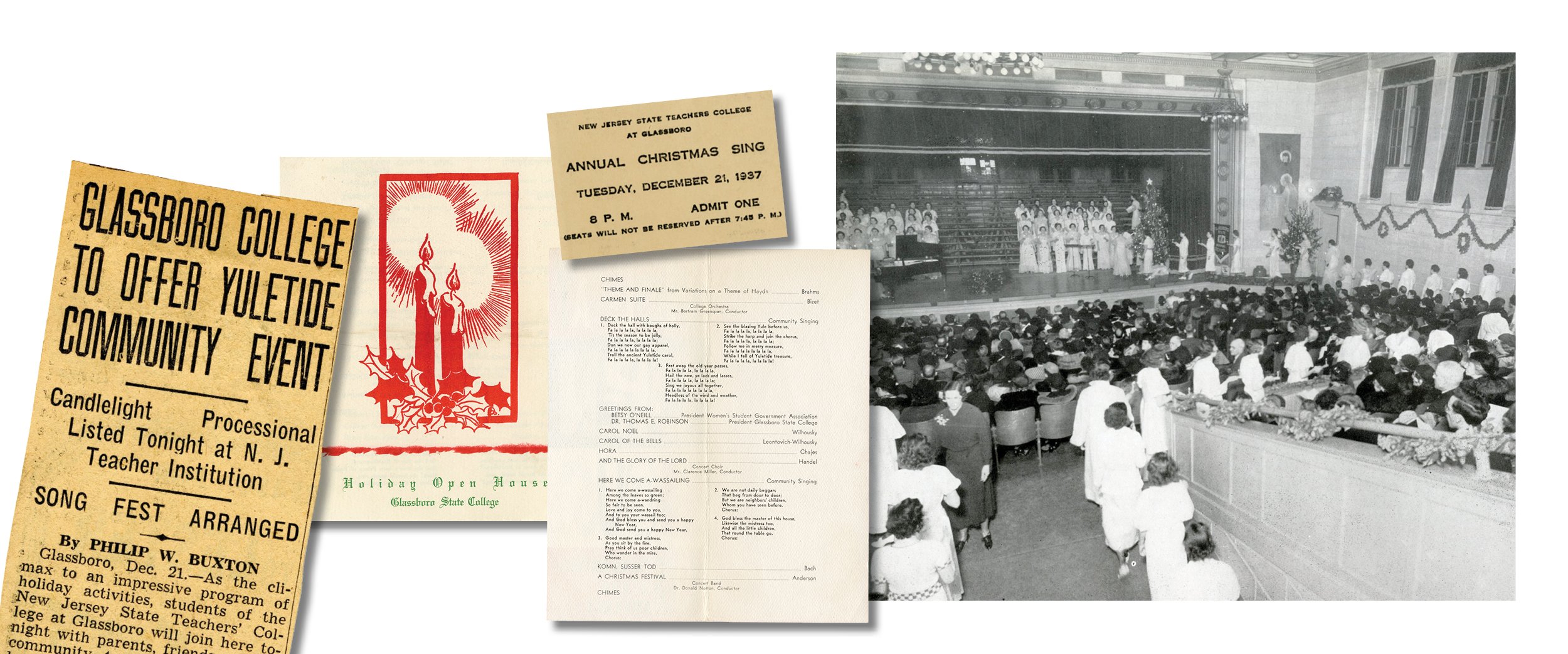
The holidays, and especially Christmas, held a special place in the hearts of the Glassboro Normal School community. Singing Christmas carols, decorating the school and charitable giving—to children in hospitals—characterized student holiday traditions in the early years of Glassboro Normal School.
Among the most fondly remembered of these festive holiday events was the Christmas Community Sing. The annual performance by students brought in an audience of hundreds from all over South Jersey.
To kick off the event, female students paraded through the auditorium in white dresses holding real blazing candles—with the comparatively few male students standing ready with firefighting equipment in case of any mishaps. Once they ascended the stage, the student body, at times with the help of visiting artists from the Philadelphia Symphony Orchestra, would perform Christmas carols bolstered by the voices of the audience.
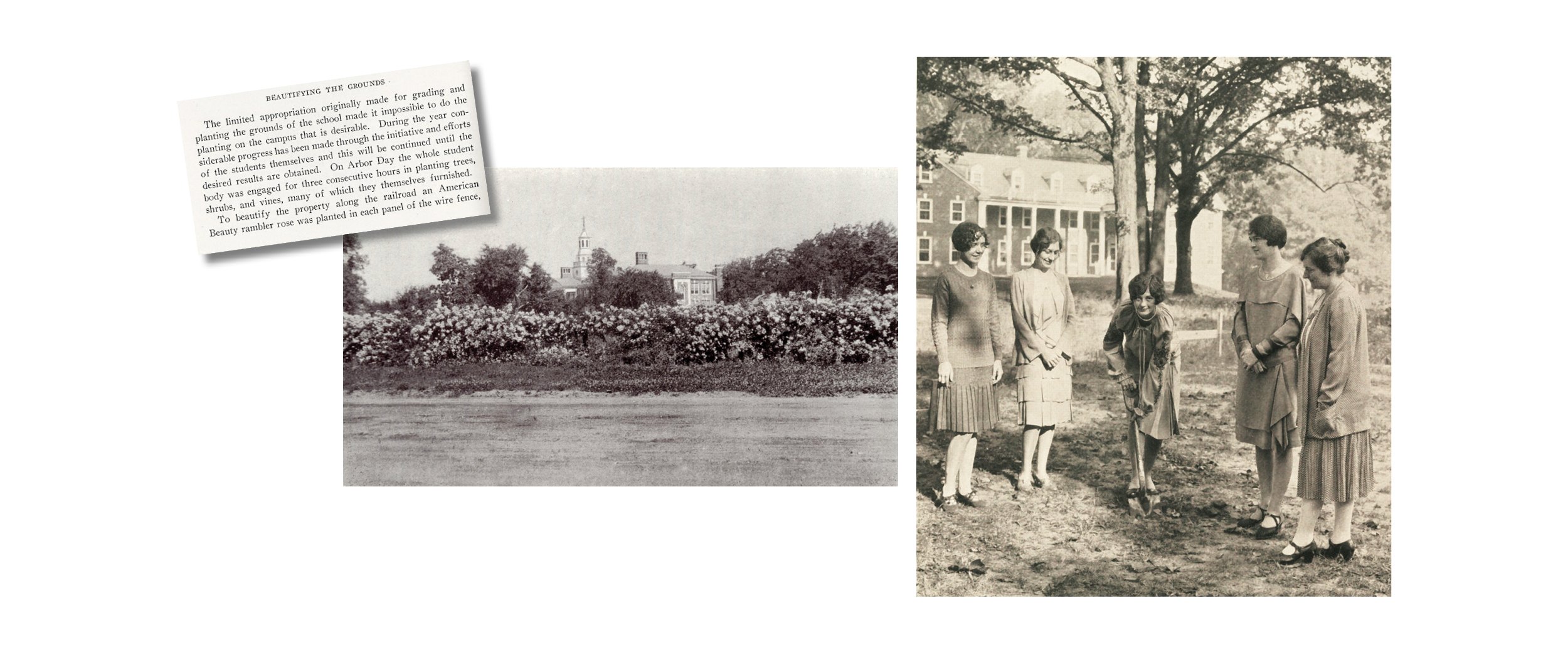
Arbor Day celebrations, too, became a long-standing tradition, beginning with a rose hedge planted during the school’s first Arbor Day. For 12 years, students and faculty purchased and planted trees and shrubbery—each of which they dedicated to faculty members or others close to the school—to further beautify the campus.
During the highest-performing years, hundreds, even thousands, of new trees and shrubs graced the campus each Arbor Day.
Perhaps the single greatest tradition to mark the first half of Glassboro Normal School’s history began in 1931 as part of the graduation week festivities. For more than 30 years, Lantern Night carried the institution through the Great Depression and so much more.
Hundreds of students took part in a lighted lantern procession in which, Bole reported, “the bright, orange flow of the moving lanterns resembled a giant, illuminated serpent in motion.” Lantern Night culminated in a literal passing of the torch, from the president of the senior class to the leader of the junior class.
Symbolizing hope for the future, Lantern Night held profound meaning for its participants.
“At a time when the icy fingers of the Great Depression were threatening to choke the Normal School to death,” Bole wrote, “the ceremony became a gesture of defiance—a visible sign that the School was determined to renew itself and live.”
World War II, with its rations and restrictions, prompted Lantern Night’s hiatus. Even so, wartime couldn’t bring a permanent end to hope. An editorial campaign by The Whit and a vote by the student body rallied the return of Lantern Night in 1952. The tradition continued well into the 1960s.